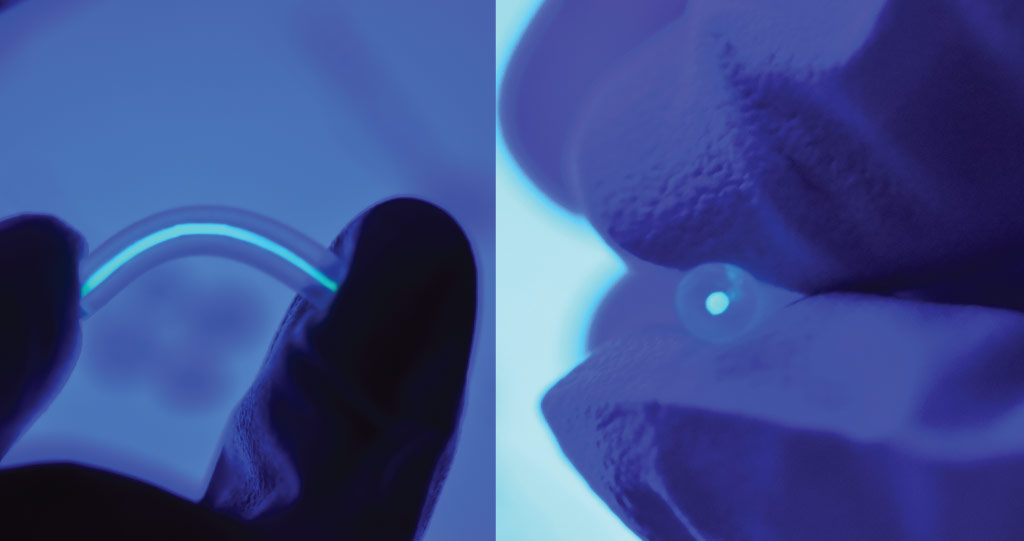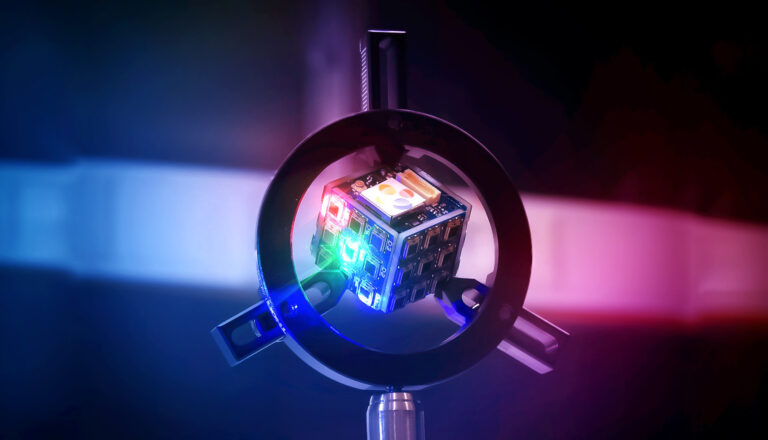Electrical Engineering
Fiber glow brings more go for underwater communications
Optical fibers doped with perovskite nanocrystals bring new opportunities for photodetectors for high-speed, free-space and underwater data links.

In free-space and underwater optical wireless communication systems, there is often a trade-off between the size of a photodetector and its bandwidth, with larger area devices capturing more light but at the expense of a slower maximum data speed. Now, researchers from KAUST have developed an elegant solution to the problem.
Chun Hong Kang and Boon Ooi and their collaborators have designed and fabricated luminescent polymer optical fibers doped with nanocrystals of CsPbBr3 that act as a large-area scintillator. The idea is that the fibers absorb an optical data signal transmitted in the violet spectral region (around 400 nm) and then reemit it in the green region (around 510 nm) so that it can be detected by a fast avalanche photodetector.

The team fabricated a luminescent polymer optical fiber (pictured above) doped with perovskite nanocrystals, producing a detector system that can operate with a data transmission of hundreds of megabits per second.
© 2022 KAUST.
The result is a detector system that is omnidirectional and can be scaled to large areas and operate at a data transmission at hundreds of megabits per second, making it especially attractive for fast underwater optical communications.
“We hope to pave the way toward the full-scale commercialization of optical-based wireless network systems that offer high bandwidth capacity, lower latency and faster data rates than existing micro- and millimeter wave technology,” explained postdoc Chun Hong Kang. “This includes bringing the optical wireless internet system to the underwater environment, where the existing technology based on acoustic and radio-frequency (RF) waves suffer significantly in terms of the data rate due to the high attenuation in water.”
Experimental tests conducted so far at a wavelength of 405 nm show that the team’s detector system offers a 3dB bandwidth of 13.1 MHz, allowing data transmission speeds of up to 152.5 Mbit/s.
However, Ooi is confident that this performance can be pushed even further by optimizing the properties of the nanocrystals used. He is now working closely with material scientists at KAUST, notably the groups of Osman Bakr and Omar Mohammed, with this goal in mind.
“The primary limiting factor for the modulation bandwidth of fiber-based detectors is the recombination lifetime of the perovskite-based luminescent material embedded within the polymer fibers,” Ooi explained. “We anticipate that perovskite-based luminescent material —with a faster recombination lifetime in the range of picoseconds allowing a gigahertz bandwidth — can be realized in the future through several synthesis and optimization strategies.”
The use of several perovskite nanocrystals of different compositions, each emitting light at a different wavelength, could also enable simultaneous transmission and detection of multiple wavelength channels to further boost data capacity.
References
- Kang, C.H, Alkhazragi, O., Sinatra, L., Alshaibani, S., Wang, Y., Li, K., Kong, M., Lutfullin, M., Bakr, O.M., Ng, T.K. & Ooi, B.S. All-inorganic halide-perovskite polymer-fiber-photodetector for high-speed optical wireless communication. Optics Express 30, 9823-9840 (2022).| article
You might also like

Bioengineering
Sensing stress to keep plants safe

Computer Science
Sweat-sniffing sensor could make workouts smarter

Electrical Engineering
New tech detects dehydration by touching a screen

Electrical Engineering
A new interface for efficient electronics

Electrical Engineering
Artificial neurons enable neuromorphic computing with light

Electrical Engineering
Narrow-linewidth lasers bring low-noise answer

Electrical Engineering
Octopus suckers inspire sticky medical patch

Electrical Engineering




